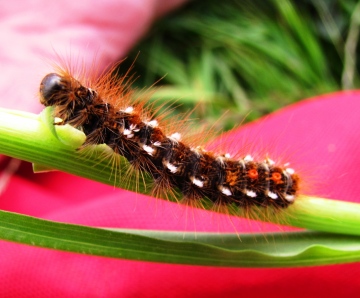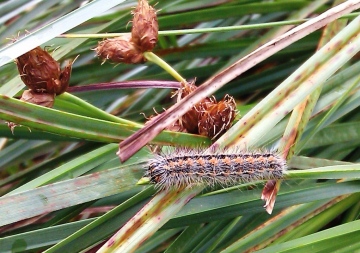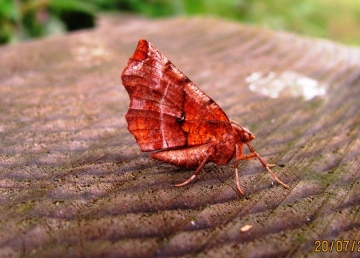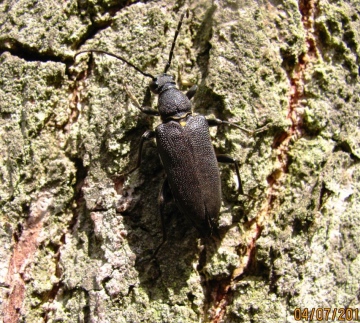You have to keep your wits about you when wading through the reeds less you barge into a Reed or Sedge Warbler's nest and tip the eggs or young into the water - not an ideal scenario on a nature reserve! You often come across other things of interest too, though, which today include the Horse Hair Parachute Marasmius androsaceus, growing on old reed stems, and these two caterpillars, a Brown-tailed Moth (above) and Reed Dagger, below.
The warm and sunny weather on Friday enabled me to carry out my weekly butterfly transect on the reserve with some hope of seeing a few! The cold, wet spring had a disastrous effect on many of the single brooded species that appear then but the summer grassland species appear to be doing well, despite the fact that a thin film water still covers large parts of the flatter fields, even this late in the summer. The one exception is the Common Blue : numbers peaked at around 500 in 2010, crashed to a maximum of 23 last year, while this summer I have not seen more than two together! However, on 13th and the week following, there were counts of 950 Meadow Brown, 300 Gatekeeper, 230 Small Heath and 44 Small Copper, the last two species reaching record levels on the reserve since regular transects began in 2007. There is plenty of grass for their caterpillars to feed on, or in the case of the Small Copper, Sheep's Sorrel, and in places I was struggling through a knee high mat of clovers, vetches, tares, vetchlings and other flowers including these, ahem, Strawberry Clover, a scarce species in Essex which seems to be found mainly along the coast. Another species which appears to be thriving in this area is the much rarer Sea Clover, which I did not photograph!.
Catches in the moth trap on the reserve also continue to improve and included a fine, late brood, Early Thorn this week.
Finally, this Longhorn Beetle Stictoleptura scutellata was snapped at The Backwarden. It appeared to emerge from the log pile near the fire site and landed on an oak nearby. Apparently it is quite a rare species but has recently been spreading its wings from its Essex HQ, Epping Forest. The identification was confirmed by both PH and Peter Hammond.






















